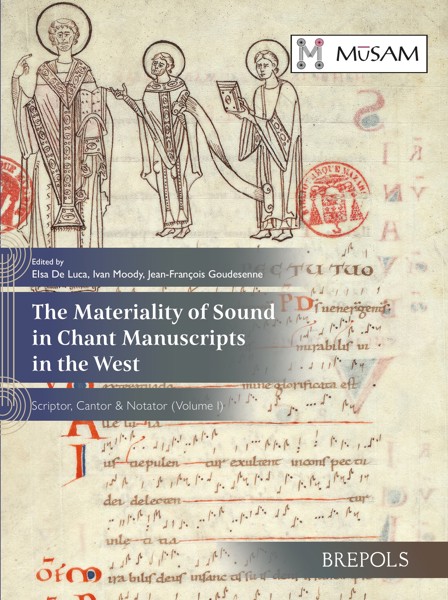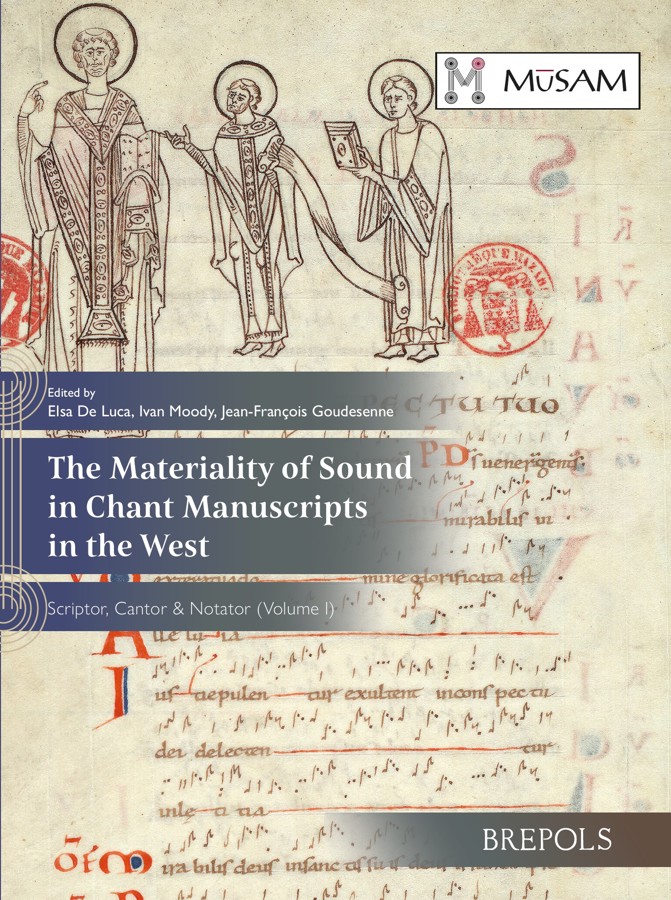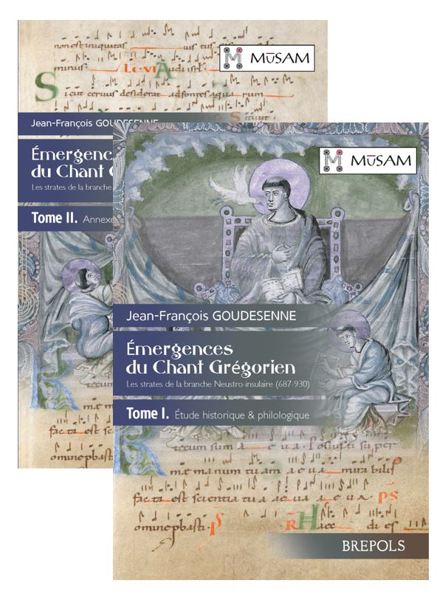
The Materiality of Sound in Chant Manuscripts in the West
Scriptor, Cantor & Notator (Volume I)
Elsa De Luca, Ivan Moody, Jean-François Goudesenne (eds)
- Pages: 328 p.
- Size:216 x 280 mm
- Illustrations:107 b/w, 33 tables b/w., 2 maps b/w
- Language(s):English, Italian, French
- Publication Year:2023
- € 99,00 EXCL. VAT RETAIL PRICE
- ISBN: 978-2-503-60614-9
- Paperback
- Available
- € 99,00 EXCL. VAT RETAIL PRICE
- ISBN: 978-2-503-60615-6
- E-book
- Available
A new, innovative and interdisciplinary collection of essays by leading scholars in two volumes dealing with chant transmission and manuscripts in both East and West, this publication is the first of its kind in the wide scope, both geographical and historical, of the variety of traditions it covers.
"...[a] splendid collection of articles that in many ways advances the conversation on chant notation." (James Grier, in The Medieval Review, 18/01/2025)
Elsa De Luca is an early music scholar pursuing research on medieval chant notations; she is also actively involved in the development of tools for computer-assisted research in early music. Elsa has published articles on notation, cryptography, and liturgy in Early Music History, Journal of Medieval Iberian Studies, Revue de Musicologie, MusikTheorie-Zeitschrift für Musikwissenschaft, CSIC Anuario de Estudios Medievales etc. She has co-edited a special issue of the Journal of Medieval Iberian Studies (14/1, 2022).
Ivan Moody is a composer, musicologist and Orthodox priest. He is a research fellow at CESEM – Universidade Nova, Lisbon. He has contributed to Grove, MGG, the Canterbury Dictionary of Hymnology and the Cambridge Companion to Stravinsky, and his book Modernism and Orthodox Spirituality in Contemporary Music was published in 2014. He is currently engaged on a number of research projects dealing with music in the Mediterranean and the Balkans.
Jean-François Goudesenne is a researcher at the Institut de Recherche et d’Histoire des Textes (CNRS), in the musicology section, founded by Michel Huglo in 1979. His most important contribution is the discovery of the Western dialect of Gregorian Chant in Neustria (Émergences du chant grégorien…, Musam, 1, 2018) and is now developing an interdisciplinary approach in fragmentology of chant manuscripts from archives, and comparative liturgy relating to chant restoration in the 19th-20th centuries in the Mediterranean area of Europe.
Scriptor, Cantor & Notator is an innovative multi-author project dealing with the complex interconnections between learning, writing and performing chant in the Middle Ages. A number of different methodological approaches have been employed, with the aim of beginning to understand the phenomenon of chant transmission over a large geographical area, linking and contrasting modern definitions of East and West. Thus, in spite of this wide geographical spread, and the consequent variety of rites, languages and musical styles involved, the common thread of parallels and similarities between various chant repertoires arising from the need to fix oral repertories in a written form, and the challenges involved in so doing, are what bring this wide variety of repertoires and approaches together. This multi-centric multi-disciplinary approach will encourage scholars working in these areas to consider their work as part of a much larger geographical and historical picture, and thus reveal to reader and listener more, and far richer, patterns of connections and developments than might otherwise have been suspected.
Scriptor, Cantor & Notator is published in two books. The first, The Materiality of Sound in Chant Manuscripts in the West, brings together articles on several different families of early music scripts in the Latin West and provides a vividly diverse picture of some of the best current scholarship on the various types of ancient and medieval musical notation.
Methodology
Concepts and Taxonomies of Music Scripts (Rankin, Susan)
Design, and the Historiography of Early Music Scripts (Varelli, Giovanni)
Appunti metodologici sullo studio del canto liturgico (Albiero, Laura)
Indeterminacy. New Aspect of Meaning in Gregorian Chant (Mascareñas Garza, Óscar)
Guiding Silence. The Function of Melodic Interruptions in Medieval Chant (Lousberg, Leo)
« Et gloriosus in saecula ». Paléographie des notations franques nord-occidentales (970–1120) (Goudesenne, Jean-François)
Manuscripts and Manuscript Fragments
Reuniting Fragments and Reconsidering the Scribal History of the Beneventan Zone (Nardini, Luisa)
Frammenti di un antifonario in notazione nonantolana (Roncroffi, Stefania)
Notation in Transition? A Palaeographical Study of the Insular Missal EXcl 3515 (Mannion, Anne)
Regional Scripts and Repertories
Notazioni neumatiche dei secoli XI–XII nella Biblioteca Capitolare di Verona. Riflessioni e spunti di ricerca (Cunego, Giovanni)
La notation musicale dans la Catalogne médiévale. Autour des origines et son évolution (Garrigosa i Massana, Joaquim)
The Scribe and the Notator as the Bearer of Identity. Bohemian Notation in Late Mediaeval Manuscripts of Central Europe (Veselovska, Eva)


